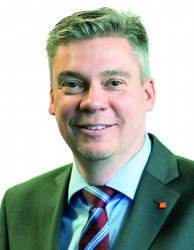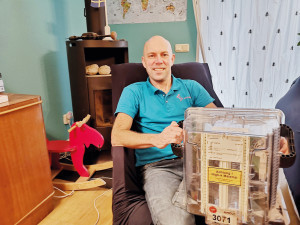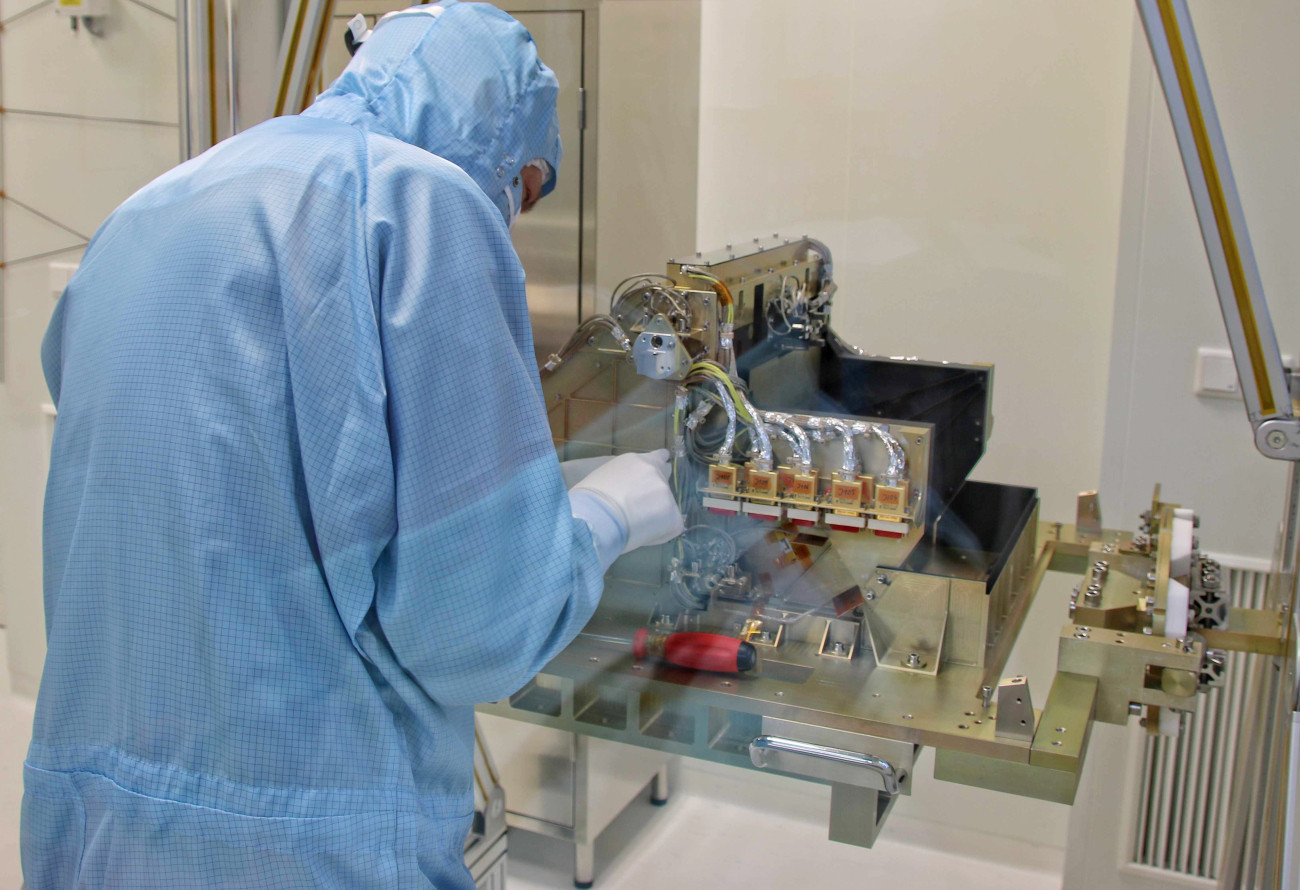In order to strategically prepare for future hi-tech settlements and expansion plans, Saxony is prophylactically developing an old military airfield north of Dresden into one of the largest industrial parks in eastern Germany. In doing so, the Free State is also drawing conclusions from the lost competition for the Intel factory site. At the same time, a Swedish university spin-off wants to bring a new dry etching process to factory maturity in Saxony - and Fraunhofer is setting up a new academy for microelectronics.
 The new microelectronics academy is intended to provide more and better trained specialists in the German semiconductor industryTheacademy set up by the Research Fab Microelectronics Germany (FMD) is intended to train and educate specialists for the German microelectronics industry, which has expanded - also as a result of the European chip law. Meanwhile, a Swedish company in Silicon Saxony is currently working on a way for Europe's semiconductor industry to advance into the sub-10 nm world without the sinfully expensive EUV systems from ASML.
The new microelectronics academy is intended to provide more and better trained specialists in the German semiconductor industryTheacademy set up by the Research Fab Microelectronics Germany (FMD) is intended to train and educate specialists for the German microelectronics industry, which has expanded - also as a result of the European chip law. Meanwhile, a Swedish company in Silicon Saxony is currently working on a way for Europe's semiconductor industry to advance into the sub-10 nm world without the sinfully expensive EUV systems from ASML.
In anticipation of future large-scale settlements, the Saxon state government is transforming the former Großenhain military airfield north of Dresden into a 145-hectare industrial park. In doing so, the Free State wants to counter the lack of immediately available large factory construction sites, which apparently also played a role in the decision of the US semiconductor giant Intel in favor of Magdeburg and against the Saxon offer to locate there. At that time, the Free State was able to offer the Americans a larger site in the Leipzig area after some effort, but it would not have been possible to build on it immediately.
Nevertheless, Saxony is still hopeful that the world's largest chip contract manufacturer TSMC from Taiwan could settle here. "Investments and settlement decisions in the past have shown how important it is to make land provisions, even for large-scale projects," emphasized State Chancellery Head Oliver Schenk (CDU). "If we have such areas and the basic preparatory work has already been completed, meaning investors can get started quickly, that is of course a big plus."
New chip academy to provide more skilled workers
 On 1 December 2022, Prof. Gerhard Kahmen, Scientific and Technical Director of the Leibniz Institute for Innovative Microelectronics (IHP), was appointed Director of the Microelectronics AcademyIn addition tosuitable space, subsidies, sufficient water on site and a reliable and inexpensive energy supply, the availability of skilled workers has long been one of the top criteria for microelectronics and other high-tech companies to locate here. It is foreseeable that the Free State of Saxony will have to go beyond its already adopted 'Saxon Skilled Labor Strategy 2030' and set a further course to ensure that investments in the state do not fail due to a lack of personnel. This includes the latest initiative of the Research Fab Microelectronics Germany (FMD). This Fraunhofer-dominated network of institutes, clean rooms and semiconductor pilot lines is now setting up its own 'Microelectronics Academy'. The academy will be spread across the whole of Germany. The headquarters in Berlin, the microelectronics site in Dresden and the former GDR semiconductor site in Frankfurt/Oder are likely to play a special role.
On 1 December 2022, Prof. Gerhard Kahmen, Scientific and Technical Director of the Leibniz Institute for Innovative Microelectronics (IHP), was appointed Director of the Microelectronics AcademyIn addition tosuitable space, subsidies, sufficient water on site and a reliable and inexpensive energy supply, the availability of skilled workers has long been one of the top criteria for microelectronics and other high-tech companies to locate here. It is foreseeable that the Free State of Saxony will have to go beyond its already adopted 'Saxon Skilled Labor Strategy 2030' and set a further course to ensure that investments in the state do not fail due to a lack of personnel. This includes the latest initiative of the Research Fab Microelectronics Germany (FMD). This Fraunhofer-dominated network of institutes, clean rooms and semiconductor pilot lines is now setting up its own 'Microelectronics Academy'. The academy will be spread across the whole of Germany. The headquarters in Berlin, the microelectronics site in Dresden and the former GDR semiconductor site in Frankfurt/Oder are likely to play a special role.
According to the FMD headquarters, the Microelectronics Academy will develop and test new content and formats for training specialists in the field of microelectronics and nanoelectronics. These training courses are intended "as a supplement to university education or as an additional qualification". The academy is linked to and financed by the new module for 'Quantum and Neuromorphic Computing' (QNC) and the 'Competence Center for Resource-Conscious Information and Communication Technology' (GreenICT@FMD) at the Research Fab Microelectronics Germany.
In Dresden, a local Siemens vocational training center had already been turned into a chip academy in 2002, in which local semiconductor companies were involved. After the Qimonda bankruptcy, the operator and the status of the academy changed. SBH Nordost now runs the 'Dresden Chip Academy', which in turn belongs to the 'Bildung & Handwerk' foundation from Paderborn.
Attracting new apprentices, skilled workers and academics to the German semiconductor industry is now a pressing problem in Saxony and throughout Germany: while numerous GDR microelectronics engineers from Dresden, Erfurt, Frankfurt/Oder and Teltow were still looking for new jobs after reunification, this pool of skilled workers has long since been absorbed by Infineon, X-Fab, Globalfoundries, Bosch and other players. The latest expansion plans in Dresden, the planned Intel megafabs in Magdeburg, the hoped-for establishment of TSMC in Saxony and other investments mean that demand continues to rise, while demographic change means that the 'internal' supply for the industry is becoming ever thinner.
Swedish foray into the sub-10 nm world
 Jonas Sundqvist with a wafer carrierMeanwhile,engineers, chemists, physicists and other academics in Dresden are also working on innovative technological approaches to take the Saxon and German microelectronics industry to a new level. Specifically, the Swedish university spin-off Alixlabs from Lund in Saxony wants to bring a new dry etching process to factory maturity. This should make the production of the latest generation of nanoelectronics significantly cheaper than previously calculated. According to Alixlabs CEO Jonas Sundqvist, it will be possible to produce particularly fine chip structures of less than ten nanometers even without expensive extreme ultraviolet (EUV) exposures.
Jonas Sundqvist with a wafer carrierMeanwhile,engineers, chemists, physicists and other academics in Dresden are also working on innovative technological approaches to take the Saxon and German microelectronics industry to a new level. Specifically, the Swedish university spin-off Alixlabs from Lund in Saxony wants to bring a new dry etching process to factory maturity. This should make the production of the latest generation of nanoelectronics significantly cheaper than previously calculated. According to Alixlabs CEO Jonas Sundqvist, it will be possible to produce particularly fine chip structures of less than ten nanometers even without expensive extreme ultraviolet (EUV) exposures.
"The Fraunhofer ecosystem here in Dresden offers us the best opportunities to quickly transfer our process from laboratory to factory scale," said Sundqvist. In particular, the Fraunhofer Nanoelectronics Center CNT and the new 'Center for Advanced CMOS & Heterointegration Saxony' (Cachs) in the former Plastic Logic electronic paper factory offer good opportunities to transfer the new technology directly to pilot lines with 300 mm silicon wafers. Unfortunately, there are no such possibilities in Sweden. This and other infrastructures at the microelectronics location Dresden were decisive in the decision to choose the Free State after an international search for a location: "We want to introduce our technology to the market quickly."
Microelectronics expert Sundqvist founded Alixlabs in 2019 together with a team from the University of Lund. The company specialized in atomic layer etching (ALE for short) and further developed it into atomic layer etch pitch splitting (APS), which can create particularly small nanoelectronic structures. In doing so, they split already existing nanostructures. As a rule, a combination of classic and newer lithography processes, multiple patterning and other chip production techniques is necessary and possible in order to ultimately generate complete semiconductor structures. However, the etching steps should also make the advance into the nano world feasible without EUV and significantly reduce production costs. Alternatively, it is possible to combine the technology with EUV to produce even finer structures, emphasized Sundqvist.
According to Alixlabs, the process has so far worked on a laboratory scale down to two nanometers. Now, however, the Swedes have to prove whether and how much their process is also suitable on a factory scale. The trials in the Dresden CNT cleanroom began in May 2022. As the transfer will take time, Alixlabs plans to establish a subsidiary in Saxony soon. The workforce in Sweden and Saxony is set to grow gradually over the next few years to an initial 30 employees.
From the turn of 2026/27, Sundqvist wants to have the Swedish etching process ready for the first customers to ramp up these systems in large chip factories. The university spin-off should then also generate its first major sales through licensing. To bridge the time and costs until then, the Swedes want to raise further money from venture capitalists from 2023.
Swiss space technology company builds up chip lithography division in Saxony
The Swiss aerospace company Beyond Gravity is also setting the course with a view to the new value chains in microelectronics that are currently being formed in Saxony, Germany and Europe: the subsidiary of the Ruag technology group is currently establishing its own lithography division in Coswig near Dresden and in Zurich. In view of the long-term growth in demand for digitalization and artificial intelligence, this new microelectronics division will rapidly expand its workforce at both locations in the coming years, the Swiss parent company announced.
"Our new Lithography division is Beyond Gravity's answer to the growing demand in the semiconductor business," explained CEO André Wall in Zurich. "We see great potential and are investing substantially in expanding our production capacities.
 View into the clean rooms of the Ruag subsidiary 'Beyond Gravity' in Coswig near Dresden
View into the clean rooms of the Ruag subsidiary 'Beyond Gravity' in Coswig near Dresden
Beyond Gravity does not manufacture complete lithography systems for chip factories, as ASML does in the Netherlands, for example. However, special stabilizers and apertures originally developed by Ruag for satellites and rockets are produced in the clean rooms in Switzerland and Saxony. However, the successor Beyond Gravity also supplies these precision components to the German Zeiss semiconductor technology division 'Semiconductor Manufacturing Technology' (SMT), which uses them to manufacture lithography optics, laser optics and other optical systems. Zeiss then sells these in turn to equipment manufacturers for the global semiconductor industry. In this respect, Beyond Gravity on the former rolling mill site in Coswig, for example, is a small but not entirely unimportant link in the long value chain from sand and complete chips to computer telephones or 'Industry 4.0' machine control systems.
The Coswig site of Beyond Gravity was originally a regional engineering company specializing in space technology. Founded in 1996 as Hoch Technologie Systeme GmbH (HTS), the company was acquired by Swiss technology group Ruag in 2016.



